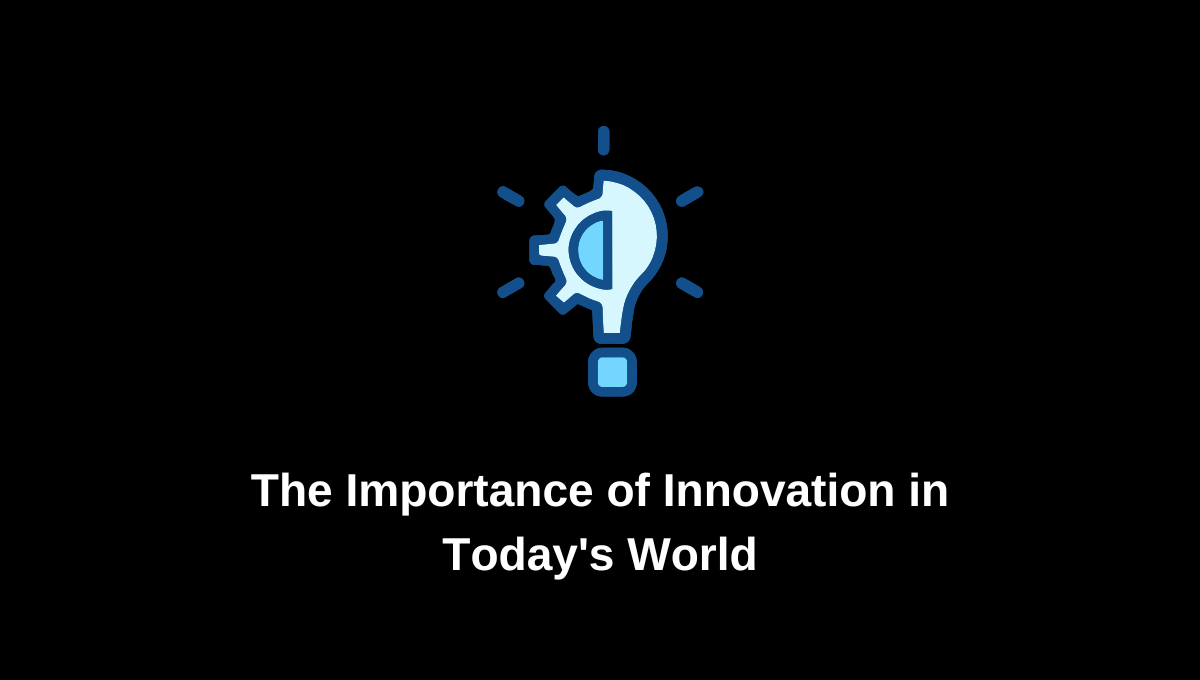Introduction
Innovation is more than just a buzzword; it’s the lifeblood of progress in any industry. In a rapidly changing world, businesses and individuals must continuously adapt and evolve to stay relevant. This article explores the significance of innovation, the factors that drive it, and how it shapes our everyday lives.
Why Innovation Matters
- Driving Economic Growth
Innovation fuels economic development by creating new products, services, and industries. It opens up job opportunities and enhances productivity, contributing to overall prosperity. Countries that invest in research and development often see significant economic returns. - Enhancing Competitive Advantage
In today’s crowded marketplace, standing out is crucial. Companies that prioritize innovation can differentiate themselves from competitors, offering unique solutions that meet consumer needs better than existing options. This competitive edge can lead to increased market share and customer loyalty. - Improving Quality of Life
Many of the conveniences we enjoy today—smartphones, online shopping, renewable energy—are products of innovation. These advancements improve our quality of life, making tasks easier, more efficient, and more enjoyable. As innovation continues, we can expect even greater enhancements to our daily experiences. - Addressing Global Challenges
Innovation plays a vital role in tackling some of the world’s most pressing issues, such as climate change, healthcare access, and food security. Creative solutions and technologies can help address these challenges, paving the way for a more sustainable and equitable future.
Drivers of Innovation
- Technological Advancements
Rapid technological progress is a primary driver of innovation. The rise of the internet, artificial intelligence, and data analytics has transformed industries, enabling new business models and improving efficiency. - Consumer Demand
Changing consumer preferences push companies to innovate. As people seek personalized experiences and sustainable products, businesses must adapt to meet these evolving expectations. - Collaboration and Diversity
Diverse teams bring different perspectives and ideas, fostering creativity. Collaborative environments—both within organizations and across industries—can lead to groundbreaking innovations by combining expertise and resources. - Government Policies and Investment
Supportive policies and funding for research and development can stimulate innovation. Governments that prioritize education, infrastructure, and technology create ecosystems that encourage creative thinking and experimentation.
Examples of Innovation in Action
- Healthcare
Innovations in telemedicine and wearable health technology have transformed patient care, making healthcare more accessible and efficient. These advancements allow for remote monitoring and consultations, improving health outcomes. - Sustainability
Companies are increasingly focusing on sustainable practices, from renewable energy sources to eco-friendly packaging. Innovations in these areas not only reduce environmental impact but also appeal to a growing segment of environmentally conscious consumers. - E-commerce
The rise of online shopping platforms has revolutionized retail. Innovations in logistics, payment systems, and user experience have made it easier for consumers to shop from anywhere, driving the growth of e-commerce.
Challenges to Innovation
- Resistance to Change
Organizations often face internal resistance to new ideas. Established processes and cultures can hinder innovation, making it essential for leaders to foster an open mindset that embraces change. - Limited Resources
Not all companies have the financial or human resources to invest in innovation. Smaller businesses may struggle to compete with larger firms that have dedicated R&D budgets. - Risk of Failure
Innovation inherently involves risk, and not every idea will succeed. The fear of failure can stifle creativity, making it crucial for organizations to create a safe environment for experimentation.
Fostering a Culture of Innovation
- Encourage Creativity
Organizations should create an environment where employees feel empowered to share their ideas without fear of criticism. Regular brainstorming sessions and open forums can stimulate creativity. - Invest in Training
Providing training and development opportunities helps employees acquire new skills and stay current with industry trends. This investment not only boosts morale but also enhances the organization’s innovative capacity. - Embrace Failure
Encouraging a mindset that views failure as a learning opportunity can help organizations embrace innovation. Analyzing what went wrong and iterating on ideas fosters resilience and growth.
Conclusion
Innovation is essential for progress, driving economic growth, enhancing quality of life, and addressing global challenges. By understanding the factors that fuel innovation and creating an environment that fosters creativity, businesses can thrive in an ever-changing landscape. As we continue to face new challenges, the ability to innovate will remain a critical factor in shaping a brighter future for everyone.
